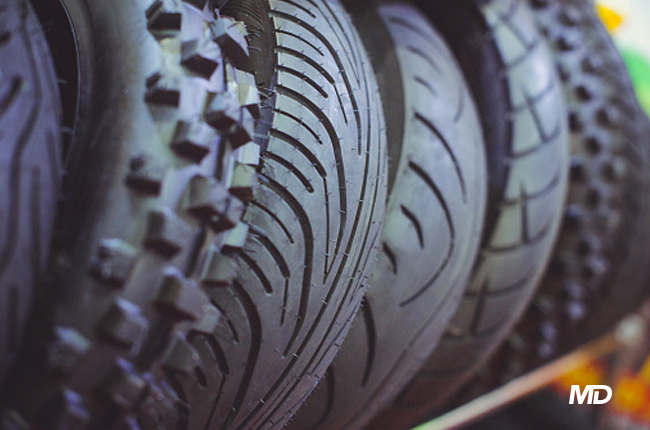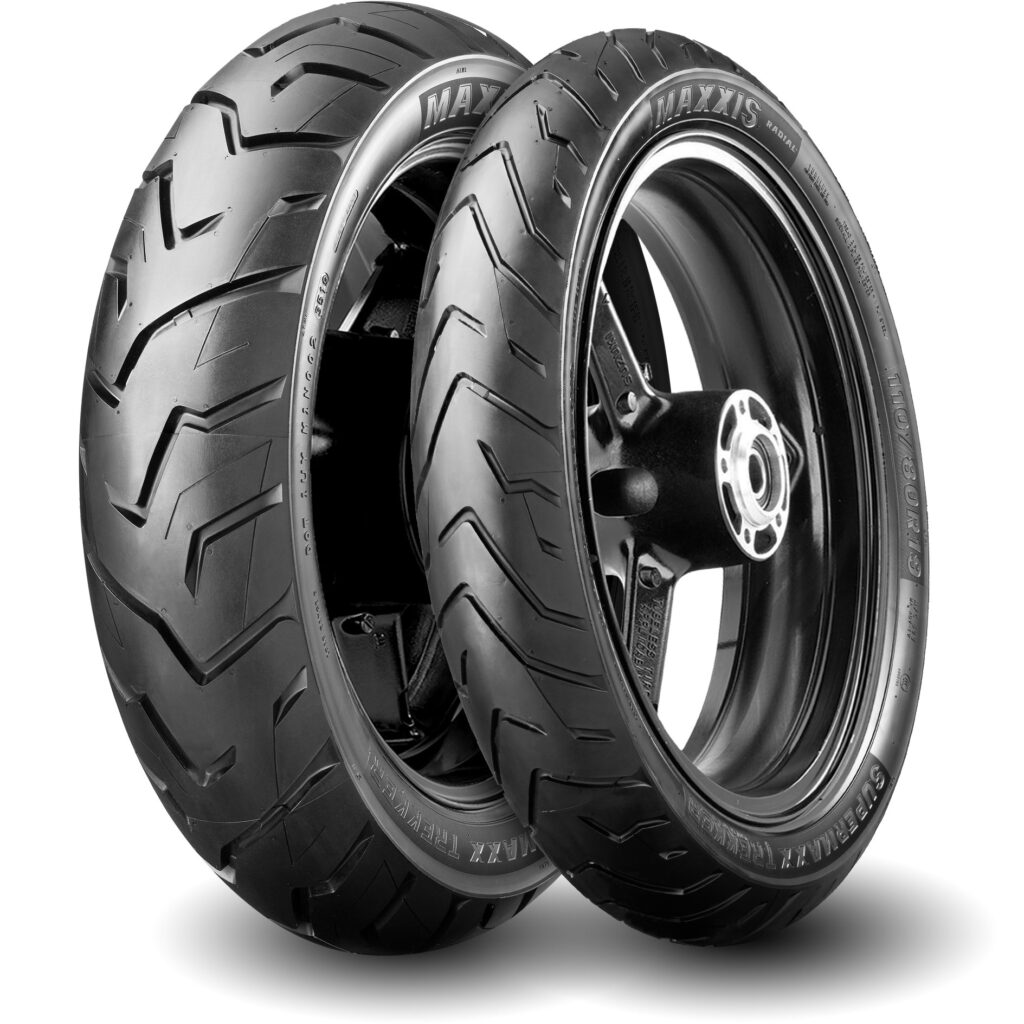Motorcycle Tyre Guide for Matching Tyres to Bike Type
Motorcycle Tyre Guide for Matching Tyres to Bike Type
Blog Article
Discover the Importance of Selecting the Right Tyres With Our Informative Motorcycle Tyre Overview
Choosing the ideal tyres is vital for any kind of Motorcycle lover. The right tyres boost efficiency, improve safety and security, and contribute to general comfort during rides. Recognizing the numerous kinds, dimensions, and maintenance techniques can substantially influence your riding experience. As motorcyclists deal with diverse surfaces and problems, understanding just how to choose the most effective tires comes to be paramount. What factors should be considered to assure peak performance? The answers wait for in the adhering to areas.
Comprehending Different Kinds Of Motorcycle Tyres
Selecting the ideal type of Motorcycle tire might seem frustrating, comprehending the different options offered can substantially enhance a cyclist's experience. Motorcycle tires are mostly categorized into 3 types: off-road, sporting activity, and touring. Exploring tires are developed for long-distance traveling, supplying toughness and comfort on freeways. These tires include a step pattern that offers outstanding grasp and stability, making them appropriate for various weather condition conditions.Sport tires, on the other hand, prioritize efficiency and handling, including a softer rubber compound that improves grasp during cornering. They are ideal for motorcyclists who enjoy spirited adventures on twisty roads or racetracks. Off-road tyres are tailored for tough terrain, with a hostile tread pattern that offers grip on loose surfaces like dust or gravel.
Examining Your Riding Design and Needs
When assessing riding design and needs, understanding exactly how different riding conditions influence efficiency is necessary. This evaluation can direct motorcyclists in choosing the ideal tyre types that align with their particular needs. By taking into consideration elements such as surface and weather condition, cyclists can make educated decisions for perfect safety and experience.
Riding Problems Effect
As bikers navigate numerous surfaces and weather condition conditions, understanding exactly how these factors influence Motorcycle performance comes to be crucial. Different riding atmospheres, such as damp, dry, or off-road, demand particular tyre qualities to assure safety and suitable handling. For example, wet problems call for tires that offer much better grasp to avoid hydroplaning, while off-road riding requires robust step patterns for traction on loosened surfaces. In addition, temperature variants can impact tire pressure and efficiency, calling for adjustments based upon the conditions dealt with. Bikers have to examine their regular routes and settings when choosing tyres, as the right selection can substantially enhance their riding experience, ensuring both convenience and safety and security in varied situations. Matching tyres to riding problems is crucial for reliable Motorcycle performance.
Tyre Types Overview
Comprehending the numerous kinds of Motorcycle tires is crucial for riders aiming to improve their performance and safety. Each tyre type satisfies certain riding styles and problems. Sporting activity tyres, made for high hold and agility, are excellent for aggressive riding and track days. Touring tires prioritize long life and convenience, making them appropriate for long-distance journeys. Off-road tires feature deeper treads for traction on uneven surface areas, attracting experience hunters. Cruiser tyres offer a smooth ride, typically highlighting aesthetic appeals for choppers and cruisers. Dual-sport tires mix features of both off-road and on-road tires, offering functional bikers. Assessing private riding designs and needs guarantees that the appropriate tyre kind is selected, eventually enhancing total riding experience and security.
The Effect of Tire Size on Performance
Tyre dimension substantially influences a bike's general efficiency, affecting grip, stability, and handling. The diameter and width of tyres can notably change a bike's characteristics. Bigger diameter tyres can improve high-speed performance, providing smoother adventures and improved security throughout straight-line traveling. They might also call for even more initiative for quick handling. On the other hand, narrower tires tend to supply much better dexterity and responsiveness, making them perfect for dilemmas and intricate riding conditions.Additionally, the aspect proportion, which connects to the tyre's height, plays a crucial function in performance attributes. A lower account tyre may improve cornering security yet can endanger convenience due to lowered cushioning. Eventually, choosing the appropriate tyre size aligns with the cyclist's preferences and intended usage, whether for sport, touring, or off-road riding. Comprehending these nuances guarantees peak efficiency and enhances the total riding experience.
Step Patterns and Their Significance
Walk patterns on Motorcycle tyres play an essential function in identifying performance, affecting aspects such as grip and handling. Various sorts of walk layouts satisfy numerous climate condition and terrains, making certain optimal grip and stability. Comprehending these patterns is vital for riders looking for to enhance their Motorcycle's performance and safety and security.
Sorts Of Footstep Patterns
The efficiency of a motorbike is considerably influenced by the kind of walk pattern on its tyres. Different step patterns serve specific features, accommodating different riding problems. For example, slick tyres feature a smooth surface, suitable for completely dry problems and racing, supplying optimum hold. In contrast, tyres with deep grooves and complex patterns are made for damp or off-road problems, boosting water variation and traction. Some tread designs, such as dual-purpose tyres, strike a balance for both light and on-road off-road usage. motorcycle tyre guide. Furthermore, sport tyres frequently possess a much more aggressive tread pattern, boosting cornering security. Comprehending these types of step patterns aids motorcyclists choose the suitable tyres for their intended riding experiences and environmental problems
Influence on Performance
Picking the ideal walk pattern substantially affects a motorcycle's efficiency in numerous riding conditions. Walk patterns are designed to maximize grasp, dealing with, and stability, straight affecting cornering capability and stopping efficiency. As an example, a much more aggressive tread design improves grip on unequal surfaces, making it appropriate for off-road riding. Alternatively, a slicker walk pattern promotes smoother experiences on paved roads, decreasing moving resistance and enhancing fuel performance. The depth and plan of grooves also play an important function, enabling reliable water displacement and decreasing hydroplaning threats. Ultimately, selecting a suitable tread pattern tailored to certain riding designs and atmospheres warranties enhanced control, security, and overall riding experience, highlighting the relevance of this choice for Motorcycle enthusiasts.
Climate and Terrain Suitability
Weather and surface types substantially influence the suitability of Motorcycle tyre tread patterns. In wet problems, tyres with deeper grooves and particular patterns are crucial to funnel water away and lower the risk of aquaplaning. Alternatively, a flatter tread style offers perfect surface area get in touch with for completely dry roads, boosting hold and stability. For off-road riding, bumpy tires offer boosted grip on loosened surfaces like mud and gravel. Each step pattern offers an unique purpose; consequently, choosing the appropriate tyre is important for performance and security. Bikers need to consider their typical riding environment-- whether urban, rural, or differed terrains-- to assure their tires can sufficiently take care of the conditions, advertising a much safer and a lot more delightful riding experience.
Preserving Your Motorcycle Tyres for Longevity
While Motorcycle fanatics often concentrate on efficiency and looks, disregarding tyre maintenance can result in premature wear and dangerous riding conditions. Consistently checking tire pressure is important, as both under-inflation and over-inflation can adversely affect taking care of and grasp. navigate to this site Furthermore, preserving the proper stress can enhance fuel performance and overall performance.Routine assessments for indicators of damages, such as fractures or punctures, likewise play a vital role in extending tyre life. Maintaining tires tidy from debris and pollutants warranties peak grip. Turning tyres on a regular basis assists disperse use evenly, extending their lifespan.Proper positioning and balancing of the wheels are needed for maintaining stability and lowering uneven wear. Sticking to the producer's referrals for tire replacement periods guarantees that motorcyclists are geared up with reputable and safe tyres. By focusing on these upkeep practices, motorcyclists can take pleasure in a more secure and longer-lasting riding experience.
Identifying Tire Use and When to Replace
To assure excellent safety and efficiency, bikers need to be alert in acknowledging tyre wear and understanding when to change their tyres. Tire step deepness is a crucial sign; a depth of 1.6 mm or less commonly indicates the requirement for substitute. Cyclists need to additionally check out the tyres for uneven wear patterns, which can suggest alignment or suspension concerns. Cracks, protrudes, or noticeable cables are major indicators of deterioration and warrant immediate replacement.Monitoring tire pressure is essential as under-inflation can accelerate wear and compromise safety. Furthermore, motorcyclists need to understand the age of their tires; even if the tread appears sufficient, tires older than five years might need changing due to rubber destruction. Regular inspections and maintenance will help identify that tires stay in peak problem, ultimately enhancing both rider safety and general Motorcycle efficiency.

Tips for Choosing the Right Tyres for Your Bike
Choosing the right tires for a bike is critical for guaranteeing excellent efficiency and safety and security, specifically after identifying the indications of wear that necessitate replacement. Riders should consider their riding design and the kinds of conditions they normally run into. Sport tyres offer enhanced grip for hostile riding, while visiting tires offer durability and comfort for lengthy journeys.Next, it's important to inspect the producer's specifications for the Motorcycle, as these guidelines ensure compatibility. In addition, reviewing tire size, step pattern, and rubber compound can influence efficiency. Bikers need to also factor in weather; specific tires execute much better in dry or damp environments.Finally, buying from trustworthy brands can guarantee top quality and dependability, while consulting fellow bikers or professionals can give important understandings. By thoroughly considering these elements, cyclists can pick tires that boost their Motorcycle's performance, safety and security, and general riding experience.
Regularly Asked Questions
How Do Weather Problems Impact Tire Efficiency?
Weather substantially impact tire performance, affecting grip, taking care of, and use. Rain can reduce grip, while severe heat might cause getting too hot. Cold temperatures can solidify rubber, endangering versatility, thereby impacting general safety and security and ability to move when traveling.
Can I Mix Different Tyre Brands on My Motorcycle?
Blending different tire brand names on a motorbike can bring about inconsistent handling and performance - motorcycle tyre guide. Specialists recommend using the same brand name and design for both front and rear tires to guarantee maximum security and security during adventures
What Is the Ordinary Lifespan of Motorcycle Tyres?

Do Motorcycle Tyres Need to Be Balanced?
Motorcycle tyres do require harmonizing to guarantee even weight circulation. Correctly balanced tires enhance security, improve handling, and reduce unequal wear, inevitably adding to a more secure and extra comfortable riding experience for motorcyclists.
Exactly how Frequently Should I Check My Tire Stress?
Regular checks why not look here of tyre stress are necessary for safety and efficiency. It is advised to inspect Motorcycle tire pressure at the very least once a month and soon adventures, guaranteeing ideal handling and fuel effectiveness. These tyres feature a walk pattern that supplies excellent grip and stability, making them ideal for various climate conditions.Sport tyres, on the other hand, prioritize performance and handling, featuring a softer rubber compound that boosts grip during cornering. On the other hand, narrower tires often my latest blog post tend to offer much better dexterity and responsiveness, making them ideal for tight corners and elaborate riding conditions.Additionally, the facet ratio, which connects to the tire's elevation, plays a crucial role in performance qualities. Sticking to the supplier's recommendations for tyre replacement periods guarantees that cyclists are equipped with safe and dependable tyres. To guarantee suitable safety and security and efficiency, motorcyclists need to be attentive in recognizing tire wear and recognizing when to change their tires. Sport tyres use boosted hold for aggressive riding, while visiting tyres supply longevity and convenience for lengthy journeys.Next, it's important to inspect the producer's requirements for the Motorcycle, as these guidelines ensure compatibility.
Report this page